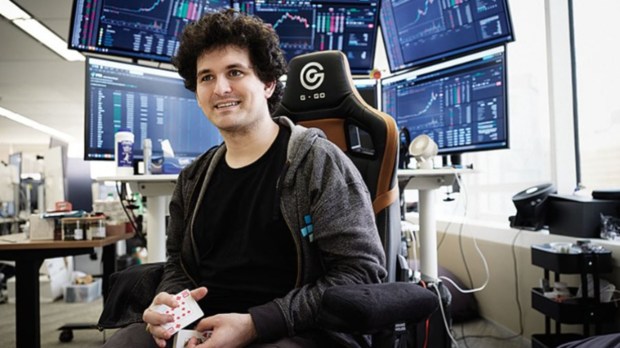A Crypto Crime Chronicled: Prosecutors Lay Out Case Against Bankman-Fried

Facing consequences is something relatively new for alleged cryptocurrency criminal Sam Bankman-Fried.
But the FTX co-founder is currently caught up in a legal battle that could see him spend the rest of his life behind bars.
The U.S. government Monday (Aug. 14) filed its first detailed look at the evidence, witnesses and prosecution plan it is expected to introduce during Bankman-Fried’s criminal trial in October.
Bankman-Fried’s defense, helmed by Mark Cohen, name-partner of the international law firm Cohen & Gresser, and Christian Everdell, also of Cohen & Gressera — both former federal prosecutors themselves — filed its own pre-trial memorandum.
Federal prosecutors have compiled one of the largest troves of evidence ever collected in a white-collar securities fraud case, including notes that Caroline Ellison, the former CEO of Alameda Research and a key witness, took after conversations with Bankman-Fried regarding the implosion of the FTX group of crypto companies and the misappropriation of customer funds, as well as terabytes of online conversations.
One of the memos being entered into evidence is titled “Things Sam Is Freaking Out About,” while separate audio recordings of critical moments in the crypto platform’s demise have also been entered for evidence.
“[I]t’s, like, somewhat out of our control to make sure all the FTX customers get made whole and don’t end up losing their deposits,” said Ellison to FTX and Alameda staff in one audio recording.
According to the prosecutors’ filing, later in the same meeting, an employee asked Ellison who else had been aware of the shortfall in FTX user funds. Ellison answered: “Yeah, I mean, I guess I talked about it with, like, Sam, Nishad and Gary.”
An employee pressed Ellison: “Who made the decision on using user deposits?” Ellison answered: “Um … Sam, I guess.”
The First Look at the Evidence Against FTX’s Founder
“[T]he central allegations in this case concern pervasive deception and the wholesale misappropriation of billions of dollars from customers, investors and lenders,” wrote prosecutors.
Last week, the federal judge overseeing the criminal case against Bankman-Fried revoked his bail and sent him to jail. The judge cited a pattern of boundary-pushing behavior in his decision, including the alleged intimidation of witnesses — namely Ellison — while Bankman-Fried was under house arrest at his parents’ home.
His lawyers have appealed the decision, but pending the outcome of that appeal, Bankman-Fried will remain in jail until his trial, which is scheduled to begin Oct. 3.
At the heart of the criminal allegations against Bankman-Fried are six claims.
Per the government’s filing, Bankman-Fried:
- made false statements to a bank to access FTX customer deposits;
- funneled millions of dollars of illegal campaign contributions into the U.S. political system using misappropriated funds;
- engaged in foreign bribery to regain access to trading capital later used by Alameda in its business investments;
- created the cryptocurrency token FTT and manipulated its value;
- instituted autodeletion policies for company communications to destroy evidence; and
- selectively prioritized the repayment of certain creditors during FTX’s collapse to avoid detection of unlawful conduct by U.S. authorities.
In addition to key witnesses Ellison, Gary Wang and Nishad Singh, who formed the defendant’s trusted inner circle during the course of the conspiracy and who have each pleaded guilty under cooperation agreements, the U.S. government will call during the trial “multiple former employees of Alameda and FTX, several of the defendant’s customer, lender and investor victims, and an expert witness whose financial analysis will show the nature and extent of the fraud.”
As laid out in the prosecutors’ filing, the government also intends to introduce documentary evidence including financial records, Google documents and Excel spreadsheets, and private communications.
Bankman-Fried’s Defense Also Takes Shape
Lawyers for the FTX co-founder introduced a motion to limit the evidence prosecutors can bring to bear on the trial, seeking to bar the government from introducing evidence that was produced to the defense after July 1.
“The government’s numerous failures to meet the discovery deadlines that it represented to the court, which has substantially prejudiced Mr. Bankman-Fried’s ability to prepare his defense,” the motion stated.
This includes the production of nearly three-quarters of a million pages of Slack messages from Wang’s laptop.
The defense also requested that any mention of FTX’s bankruptcy be struck from the evidence presented during the trial.
“The bankruptcy is irrelevant to the issues in the present case and should be excluded altogether because it poses a substantial risk of unfair prejudice,” the motion said. “… Moreover, it is unclear at this time whether FTX or Alameda are, in fact, insolvent or that customers will not ultimately be made whole. Any statements to the contrary would therefore be based on speculation.”
As of Tuesday morning (Aug. 15), Bankman-Fried’s defense team has not replied to PYMNTS’ request for comment.
The government’s filing included the note that “evidence and claims that others in the cryptocurrency industry misused customer assets or engaged in misconduct” should be excluded during the trial.
“[W]hether or not misuse of customer assets or other forms of fraud are rampant in the cryptocurrency industry is not relevant to the issues at trial,” prosecutors wrote.
The federal team also sought to exclude any mention of the fact that “several of the witnesses the government expects to call engaged in recreational drug use.”
For Bankman-Fried’s part, his lawyers were able to get him his prescribed ADHD medicine in jail: an Emsam transdermal patch and three to four Adderall tablets a day, per a court filing.

